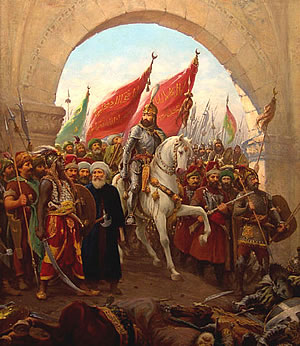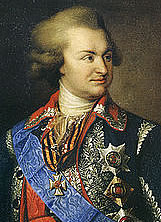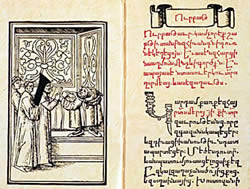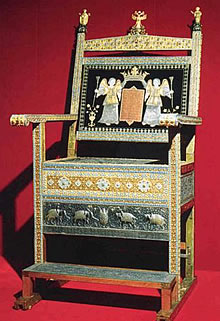Partition of Armenia
Decline of Armenia
 Mehmed II entering to Constantinople, by Italian painter Fausto Zonaro
Mehmed II entering to Constantinople, by Italian painter Fausto Zonaro
In the early 15th century Armenia was still divided into many small-scale principalities. However, after the conquest of Constantinople by Sultan Mehmed II in 1453, the country gradually lost all vestiges of political sovereignty. Armenia was incorporated into the Ottoman Empire.
The systematic invasions and ravages caused decline of the major Armenian cities. The Nakharar system was definitely destroyed. The Armenian Church also remained in disorder until the Holy See was transferred from the former Cilician capital of Sis to Vagharshapat.
A large number of Armenians continued to migrate from their devastated lands to Crimea, to Russia, to Poland, to India. As Constantinople became a thriving center of the Ottoman Empire, its Armenian community increased to the extent that a special see was set up apart from the Patriarchal See in Vagharshapat. The Armenian Church in Constantinople had particular privileges among the other branches of the Christian church.
While the Armenian colonies prospered in different countries, the population of Armenia proper suffered incredible privation and persecution. The peasantry was especially oppressed, discriminated and overtaxed. Several uprising against Turkish conquerors took place, but all of them were brutally crushed.
Partition of Armenia
From the beginning of the 16th century, Armenia became a scene of confrontation between the Ottoman Empire and Iran. The Armenian population suffered from the consequences of the long sanguinary conflict that lasted more than two centuries. Following the final armistice in 1639 the territory of Great Armenia was split into two. The Western Armenia fell to the Ottoman Empire, and the Eastern Armenia became part of Iran.
The Shah Abbas I, the greatest of the Safavid rulers, led the policy of intensive settling of the Muslims on the Armenian lands, while the Armenian population was moved to Iran. A big and thriving colony was founded in New Julfa, a suburb of Safavid capital of Isfahan. Very soon, New Julfa became one of the centers of the Armenian intellectual and cultural life, just like Constantinople or Venice. In all of these cities, also in Amsterdam and in Vagharshapat, several Armenian printing houses were set up. The first printing of the whole Bible in Armenian was done in 1666 in Amsterdam, but the first book printed in Armenian appeared in Venice in the early 16th century.
The Russian Hope
 Israel Ori, Armenian diplomat and patriot, spent many years of his life traveling and seeking support of foreign countries for Armenia.By unknown author, around 1700
Israel Ori, Armenian diplomat and patriot, spent many years of his life traveling and seeking support of foreign countries for Armenia.By unknown author, around 1700
From the early 17th century, Armenians began to place their hopes on the growing Russian Power. A number of messengers were sent to the Russian czars in order to ask protection. The rich Armenian community of New Julfa made the czar Alexis I Mikhailovich a sumptuous present of a golden throne adorned with precious stones (the so called Diamond Throne).
In the late 17th century, the ties with Russia strengthened as military victories of Peter the Great over Persians and Turks inspired Armenians. At the same time, a number of patriots, such as Israel Ori, traveled all over the Europe trying to find support of Christian powers. Unfortunately, their activities brought little results.
The Meliks of Karabakh
At the same time, the Eastern Armenian provinces rose against the Moslems. Uprisings were headed by the princes of Artsakh (the so-called Meliks of Karabakh). In 1697, the Meliks adopted Gandzasar Treaty, which proclaimed “the entry of Armenia under the patronage of Russia”. Unfortunately, the Russian territorial expansion stopped soon, and Armenians met with great disappointment. David-Bek, ruler of Artsakh and Siunik provinces, supported by Mkhitar Sparapet, consolidated Armenian forces against the Turks. However, after David-Bek died in 1730, the Turkish tribes gradually dominated most of Artsakh, proclaiming the Khanate of Karabakh in the late 50s.
 Portait of Prince Potemkin, by unknown author, 1847The Armenian nation took heart under the reign of Russian Empress Catherine the Great (1762-1796). As a result of the two successful wars against the Ottoman Empire, Russians annexed new vast territories. The Count Potemkin, illustrious statesman and favorite of the Empress, propounded the idea of forming a new Armenian-Georgian Kingdom. A number of enthusiastic rich Armenians abroad suggested financing the project. Unfortunately, it turned out Utopian just like another similar project of creating a Greek monarchy.
Portait of Prince Potemkin, by unknown author, 1847The Armenian nation took heart under the reign of Russian Empress Catherine the Great (1762-1796). As a result of the two successful wars against the Ottoman Empire, Russians annexed new vast territories. The Count Potemkin, illustrious statesman and favorite of the Empress, propounded the idea of forming a new Armenian-Georgian Kingdom. A number of enthusiastic rich Armenians abroad suggested financing the project. Unfortunately, it turned out Utopian just like another similar project of creating a Greek monarchy.
However, the Russian influence in Caucasus kept growing, while the Persian power fell in decline. In 1800, Georgia became part of the Russian Empire. 5 years later, the rebellious leaders of Karabach proclaimed themselves loyal subjects of the Russian czar. The Persian troops were defeated several times, and the Russian army besieged Erevan. The Treaty of Gulistan (1813) officially asserted the Russian sovereignty over a number of former Khanates including the Khanate of Karabakh.
Eastern Armenia becomes part of Russian Empire
After the Treaty of Turkmenchaj (1828), the greater part of the Eastern Armenia was brought under Russian control. As a result, a large number of Armenians moved back from Persia to Armenia. The Armenian Oblast (Province) was created, which lasted from 1828 to 1840.
From the middle of the 19th century, capitalist relations in the Eastern Armenia developed intensively. The newborn Armenian bourgeoisie invested its capital in the new industrial centers, such as Tiflis and Baku, also in Alaverdi and Zangezour, centers of the copper industry.
Meanwhile, the Western Armenia with most of the Armenian lands still remained under the yoke of the Ottoman Turks. The large Armenian population of the Ottoman Empire continued to experience immeasurable sufferings. Periodic uprising took place during the entire 19th century in Sassun, Mush, Zeytun, Van and other Armenian cities, but all of them were severely suppressed.










